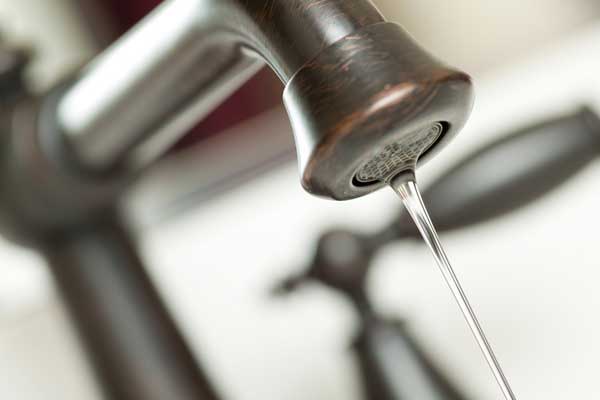Testing the resistance of faucets against corrosion can be done by employing metal testing instruments. Also called Environmental Chambers, Salt Spray Chamber is used to test the corrosion resistance of coating on the metal faucets, drains and other bathroom/ kitchen accessories.
Corrosion is a natural process and can be defined as complex series of reactions between the surface of metal and water. Due to the presence of other materials in the water, like impurities, the process of corrosion gets accelerated. Almost all metals have a tendency to get corroded to some degree. Corrosion resistance properties depend on many factors like the composition of metal, exposure to environmental conditions, impurities in the water like calcium and magnesium in water, etc. Due to impurities, scales form a coating inside the faucets and drains which exhibits corrosion accelerating properties.
Some other factors that contribute in promoting corrosion…
- pH level of water can impact the extent of corrosion. In such cases, microbiological corrosion is common which is promoted by bacteria like SRB (sulphur reducing bacteria) in alkaline water.
- The temperature of water flowing through the faucet can increase the chemical corrosion and biological rate of growth.
- The presence of oxygen and other gases can induce corrosion.
- The presence of dissolved solids like sulphate and salts can promote corrosion.
- The presence of sand, sediments, suspended solids, corrosion by-products can lead to bio-chemical
Apart from these, there are several other factors that contribute a lot in inducing corrosion on a metal surface, despite coatings and platings.
Why Is It Important to Perform Corrosion Resistance Test?
First of all, it affects the reputation of your brand. Any of the above-mentioned conditions can be easily found where faucets are being used. You cannot make a product free from corrosion, as of now. But, you can take appropriate measures to protect it and estimate its resistance.
Second, supplying products which are prone to rusting may be harmful to the consumer. Water flowing through rusty faucet may suspend components in the water, which, if the consumed may prove harmful. If tested appropriately beforehand, advisory can be issued along with the product.
Third, a corrosive product transmits by-products in the environment. This may affect the other accessories like the heating element of the water heater, door knobs, other metal accessories in the surrounding. Showers and sprinklers are commonly used in the bathrooms. This scatters the corrosion carrying by-products in the nooks of the room; exposing door, hinges, metal closers exposed to by-products. Such products are not even fully tested for biochemical corrosions. To avoid this, the manufacturer should assess the corrosion resistance properties of faucets beforehand.
Fourth, corrosion spoils the aesthetics of the bath fittings and other accessories like basins, etc. by leaving corrosion stains. To avoid this situation, the manufacturer must test the faucets prior to supply.
It decreases the shelf life of whole plumbing in the area. Corrosion actually eats out the metal which eventually makes the whole system weak, leading to damage. If not secured, at least manufacturer can take appropriate plating measures and test to decreases the risk.
Use of Salt Spray Chamber
Salt spray chamber is an environmental test chamber, which is used for assessing the properties of coated metal in the salt laden environment. Presto Group offers multiple models of corrosion test chambers. In this machine, there is an atomiser that produces salt laden fog in the chamber. In this chamber, the test material is placed and a visual inspection is done once the test is over. This is a long run test. A reservoir tank of NaCl solution is incorporated in the machine to run the test non-stop. This tank usually has the capacity of 60 litres. Depending upon the test material, a test run can be as long as few weeks. This machine has a digital display to reflect the duration of the test.
This machine is in compliance with different testing standards like ASTM B117-97, ASTM D412, DIN 50-021, IS 11864-1986, IS 9844-1981.
A tower style atomiser is placed in the centre of the chamber to dissipate the fog evenly throughout the chamber. However, in other machines, zero choke atomiser is used to create the fog in the chamber. This is a triple walled chamber with glass wool insulation. The chamber is highly insulated to avoid any heat loss and fog loss.
From the safety point of view, the feature of air purging is incorporated in the machine. Due to this, the salt laden fog is made to settle down automatically after the test is over; after that canopy of the chamber is opened. This prevents any unwanted fog distribution in the surroundings to prevent corrosion.
